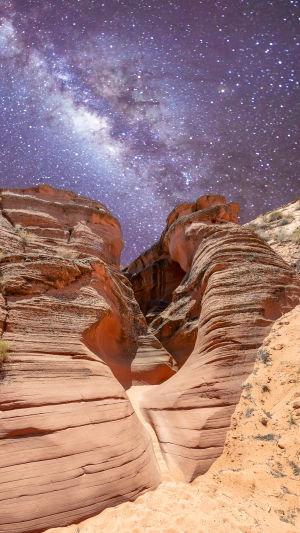<h3>Why Visit Antelope Canyon?</h3>
Antelope Canyon is a natural masterpiece, shaped over thousands of years by the forces of water and wind.
Known for its iconic light beams illuminating narrow sandstone passages, Antelope Canyon offers a surreal experience, especially during midday when sunlight filters through, casting otherworldly hues. Its appeal lies in the striking interplay of light and shadow, making it a bucket-list destination for photographers, adventurers, and nature lovers alike.
<h3>Top Things to See and Do</h3>
<b>Upper Antelope Canyon</b>
Famous for its light beams, Upper Antelope (known as "The Crack") is the most popular section. The light beams are visible between late March and early October, offering perfect photography opportunities.
Entry Fee: Around $60–$70 per person; Opening Hours: 8:00 am – 5:00 pm, with tours available.
<h3>Top Things to See and Do</h3>
<b>Upper Antelope Canyon</b>
Famous for its light beams, Upper Antelope (known as "The Crack") is the most popular section. The light beams are visible between late March and early October, offering perfect photography opportunities.
Entry Fee: Around $60–$70 per person; Opening Hours: 8:00 am – 5:00 pm, with tours available.
<b>Lower Antelope Canyon</b>
Slightly more challenging to explore with ladders and narrow twists, Lower Antelope (or "The Corkscrew") offers unique angles and fewer crowds.
Entry Fee: Around $40–$50 per person; Opening Hours: Similar to Upper Antelope, with tours throughout the day.
<b>Photography Tours</b>
Several companies offer specialized photography tours, ideal for capturing Antelope Canyon's best angles without the usual crowds. These tours are generally held in Upper Antelope and include additional time for photographers to set up and capture the scene.
<b>Lake Powell</b>
Just a short drive from the canyon, Lake Powell is perfect for kayaking, boating, or a relaxing afternoon by the water, allowing visitors to immerse themselves in a different type of natural beauty.
<b>Horseshoe Bend</b>
Located nearby, Horseshoe Bend provides a stunning panoramic view of the Colorado River’s dramatic bend in the sandstone, offering breathtaking views and incredible photo opportunities.
<h3>Best Time to Visit</h3>
The best time to visit Antelope Canyon is from March to October, especially between 11 am and 1 pm, when the sunlight creates the famous beams inside the canyon. Summer months bring peak crowds, so early spring and fall are ideal for a quieter experience. Winter offers a unique ambiance with fewer visitors, though light beams are scarce.
<h3>Where to Stay</h3>
<b>Luxury Stay:</b> Page, AZ has upscale resorts like Lake Powell Resort, offering comfortable amenities and proximity to both Lake Powell and Antelope Canyon. Average rates range from $200 to $400 per night.
<b>Budget Stay:</b> Budget-friendly motels and inns, such as those in Page’s town center, provide easy access and basic amenities. Prices range from $80 to $150 per night.
<h3>Getting There</h3>
Antelope Canyon is located near Page, Arizona. The nearest airport is in Flagstaff, about a two-hour drive. Tours are mandatory to enter the canyon, as it is located on Navajo land. Numerous tour companies provide transportation from Page, ensuring an organized and enriching experience.
Lykkers, if you’re drawn to dramatic landscapes and the artistry of natural light, Antelope Canyon is calling! Capture the magic of light filtering through rock formations and explore a wonder shaped by nature
<b>Grab your camera, sense of wonder, and dive into the surreal beauty that awaits in Antelope Canyon!</b>
Antelope Canyon Tour and Horseshoe Bend from Sedona, Arizona
Video by Viator





